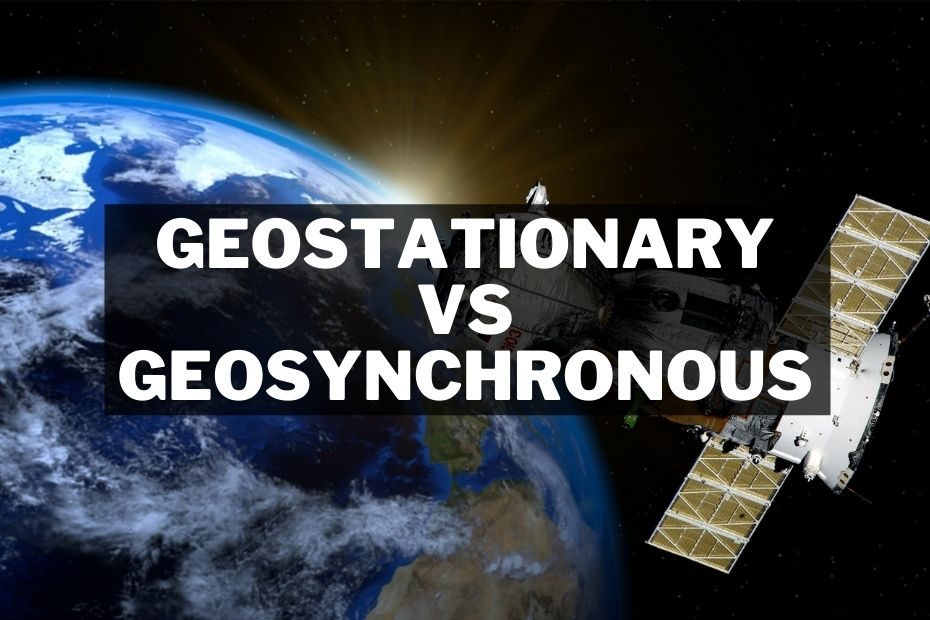In this section, I will be discussing the difference between Geostationary and Geosynchronous orbits as well as how they work.
Geostationary orbit is a circular orbit of a satellite. A satellite in geostationary orbit doesn’t have to do any extra maneuvers, it just needs to be put in the right location. Geosynchronous orbits are medium-Earth-orbit orbits where the period of the satellite is equal to one day.
The difference between these two orbits is that geosynchronous orbits require more frequent orbital adjustments because they don’t keep pace with time zones like satellites in geostationary orbit do.
What is a Geostationary orbit?
The first type of orbit is a geostationary orbit. These are the orbits that are located at a distance of about 22,236 miles (35,786 kilometres) or exactly 22,300 miles (35,800 kilometres). They are also placed directly above the equator and travel in an east-west direction which means that they will always stay above the same point on Earth.
The term “geostationary” is often used to describe this particular type of geosynchronous equatorial orbit, although it may also refer to other orbits in such an orientation.
Geostationary orbits are also known as geostationary Earth orbits. They are used for satellites that need to remain stationary with an unchanging position relative to the Earth’s surface. They provide a great advantage over geosynchronous orbits because they allow continuous broadcasting of data without interruption from the orbit.
What is a Geosynchronous Orbit?
The second type of orbit is called geosynchronous which orbits the earth surface and take approximate 23 hours, 56 minutes, and 4 seconds.
A geostationary orbit is a circular satellite orbit in the plane of the Earth’s equator and with an orbital period that matches the Earth’s rotation.
These types of orbits are inclined at an angle with respect to the equator that ranges from zero to 23 degrees.
The Benefits of a Geostationary Orbit for Satellite Communications
Satellites are devices that are used to transmit information from one earth station to another. The geostationary orbit is the best orbit for satellite communications because it keeps the satellite at a fixed position above the earth.
The geostationary orbit is advantageous because satellite coverage is available all over the world and it doesn’t require line of sight visibility between transmitter and receiver.
Difference Between Geostationary and Geosynchronous Orbit
Geostationary and geosynchronous orbits both have advantages and disadvantages. Here are some of the differences between Geostationary and Geosynchronous Orbit:
Geostationary Orbit
- Geostationary orbits offer a more consistent position, but they do not orbit around the Earth’s equator and so they don’t cover the whole globe.
- The geostationary orbit is an orbit around Earth with an altitude of about 35768 Km. Satellites in this orbit are always above the same point on the Earth’s equator.
- Orbit has a period equal to the rotation period of Earth.
- It is a Circular Orbit.
- It has Zero Inclined with respect to Earth Equator.
geostationary satellite example
Some examples of geostationary Satellite are Geostationary Operational Environmental Satellite Series, Indian INSAT Satellites, and Himawari etc.
Uses of Geostationary Satellite are Terrestrial Reports, Weather Forecasting etc.
Geosynchronous Orbit
- Geosynchronous orbits offer more movement, but this movement is slower than geostationary orbits and can be interrupted by weather or other external forces such as solar winds or sunspot activity, which obstructs satellite signals from reaching their destination.
- Orbit Period is equal to one sidereal day.
- These may be Circular or Non-Circular Orbits.
- Geosynchronous Satellite has an inclination with respect to Earth Equator.
Geosynchronous satellite example
Some examples of Geosynchronous satellites are Indian Astra 1C, Russian Raduga 29 etc.
Uses of Geosynchronous Satellite are Voice and Data communication, Internet, radio signals, TV Broadcasting.
Conclusion
I will just mention the technical differences between geostationary and geosynchronous orbit. Geostationary orbit is a circular orbit that has an inclination of zero degrees, which means that the satellite hovers over the same spot on Earth.
The main difference between geosynchronous and geostationary orbits is that both are near-circular but in a geo-synchronous orbit, there is one point on Earth where the satellite hovers over it without moving.
Do you want to learn more about Satellite? Most of us are not aware of the reason for the need for satellites.
There are many great reasons for using Satellite. Most satellites orbit just a few hundred miles above Earth’s surface, though some go much higher or lower. We hope this article will motivate you to learn more about satellites
Some of the resources related to Satellites:
